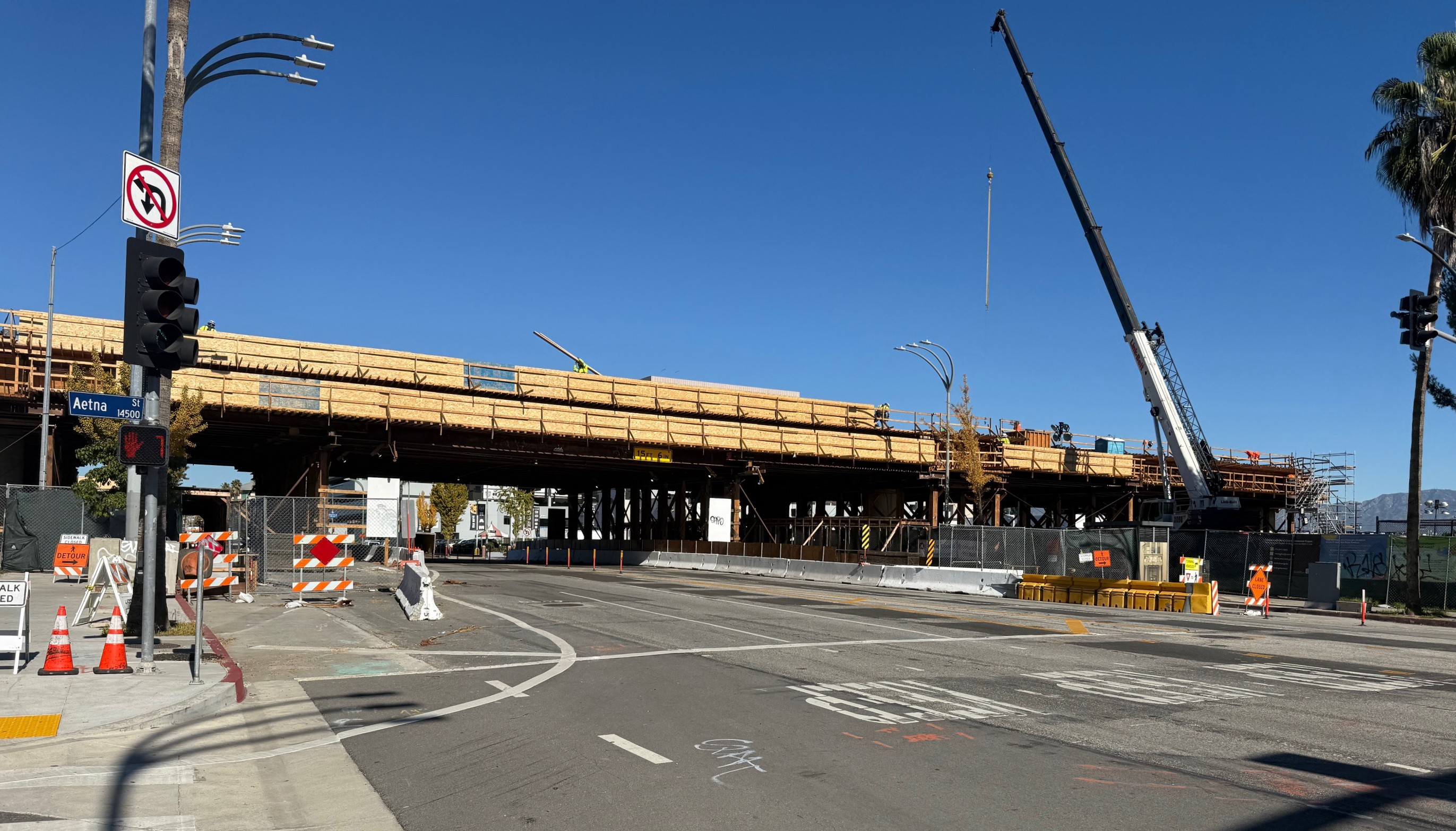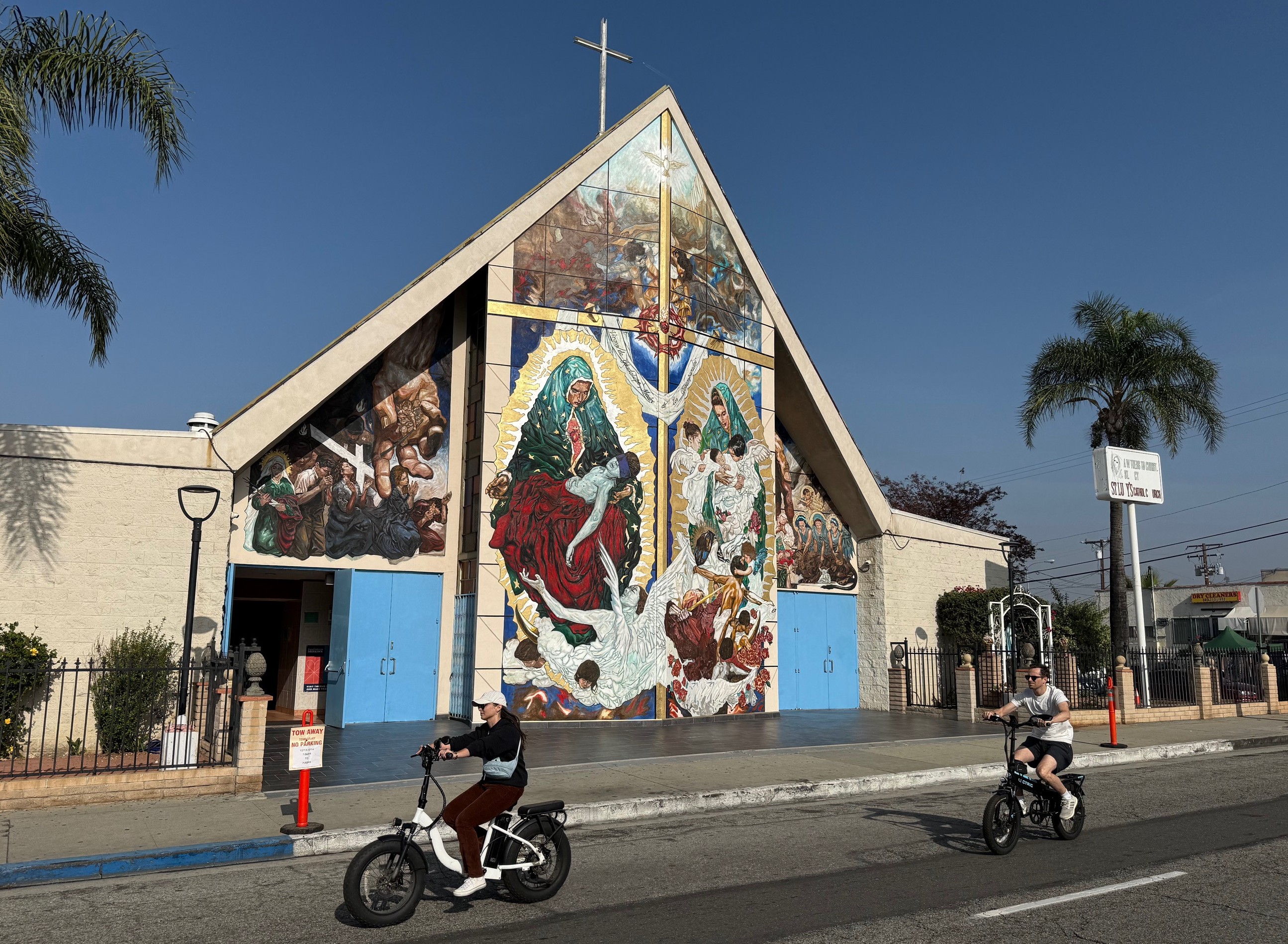Got a road that needs fixing in your state? Don't hold your breath. Chances are your state DOT has been busy building new roads, while neglecting maintenance.
A new report from Smart Growth America [PDF] finds that states spent 57 percent of their highway funds building new roads between 2004 and 2008. As a result, 23,300 new lane miles were constructed -- a 1.3 percent expansion. Meanwhile, the existing 1.9 million lane miles deteriorated under a regime that prioritizes expansion of the system over its maintenance.
The Federal Highway Administration reports that half of all major state roads were in “fair” or “poor” condition in 2008.
"It’s imperative that states rethink how they invest their precious transportation dollars," said Erich Zimmermann, a policy analyst with Taxpayers for Common Sense, a co-sponsor of the study. "Since 1956 federal taxpayers have invested in the neighborhood of $1 trillion the nation’s highways and therefore have an interest in making sure these investments are kept in a state of good repair."
"Unfortunately nobody gets to cut a ribbon when a road is fixed," Zimmermann continued.
The lack of attention to existing infrastructure is likely to have a long-term cost, well beyond the immediate "savings" of doing nothing. The American Association of State Highway and Transportation Officials reports that every dollar spent to keep a road in good condition helps save $6 to $14 that would otherwise be required to rebuild a significantly deteriorated street.
"It just becomes incredibly expensive to fix these roads when they’ve passed a certain state of disrepair," said Grace Crunican, former Director of the Oregon and Seattle DOTs. "We're not doing a good job prioritizing what the needs are."
Perhaps most significantly -- and rather obviously -- states' fetish for new building means that road networks are actually expanding as they continue to fall into worse condition. Smart Growth America determined that states would collectively need to spend $43 billion every year for 20 years to bring "poor" roads into "good" condition and keep them that way. That's more than the $38 billion all the states combined had to spend each year on both new construction and maintenance between 2004 and 2008.
The good news is, a few states are making adjustments to find a more sustainable path. Among the states praised by Smart Growth America is Michigan, which has adopted a "Preserve First" program. Between 2004 and 2008, the state dedicated 86 percent of its road funds to preservation. That investment helped raise the number of Michigan's roads that are in "good" condition from 48 percent in 2004 to 60 percent in 2008, the report noted.
The report also credited Florida, New Jersey, New York and the District of Columbia for being the only states to spend enough money on maintenance and repair to keep good roads good and make bad roads better.
In response to the findings, Smart Growth America and Taxpayers for Common Sense are recommending that federal transportation dollars be conditioned on states doing an adequate job maintaining their current system. The report also recommended that states establish clear benchmarks for road conditions and prioritize the most heavily traveled roads for maintenance.







